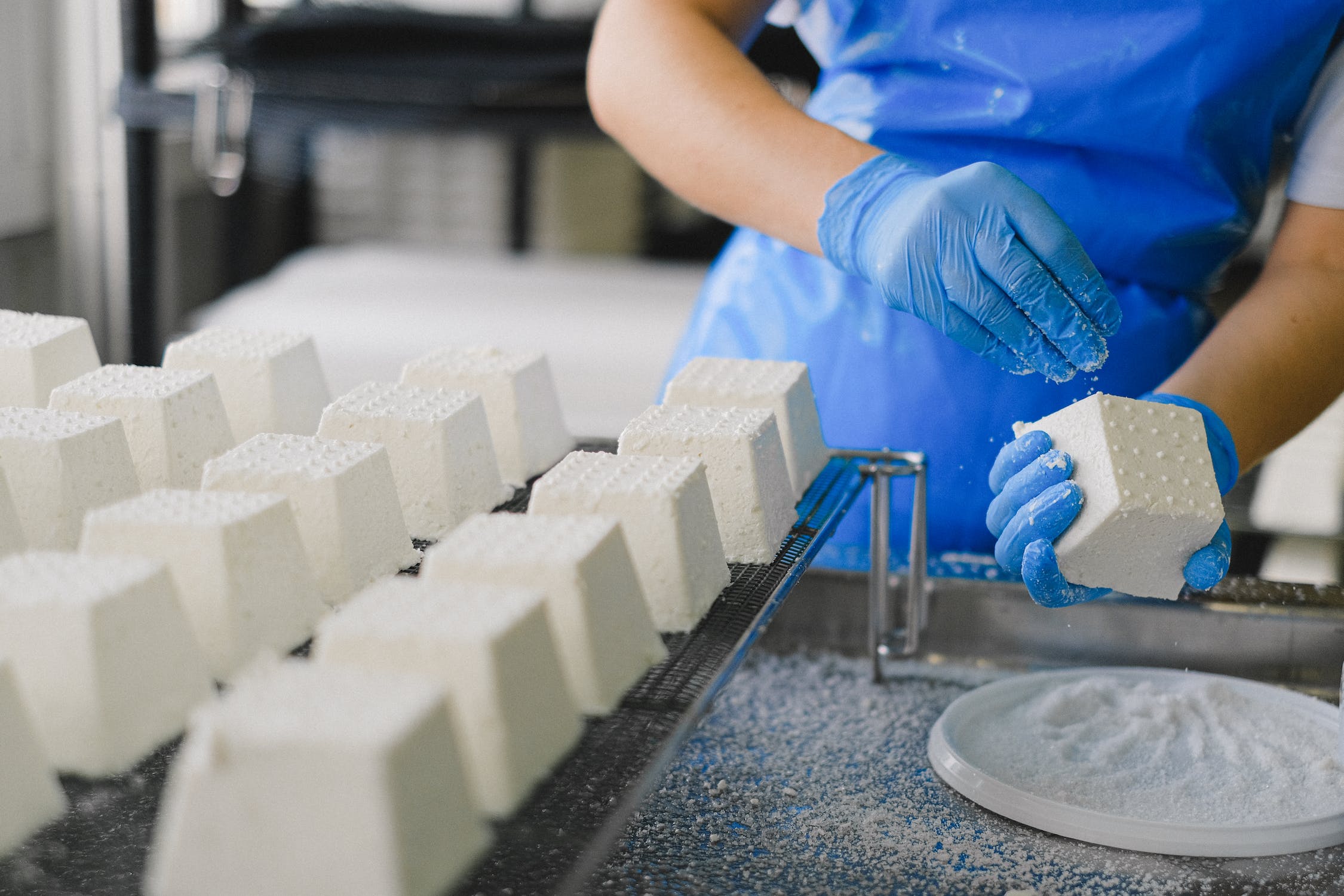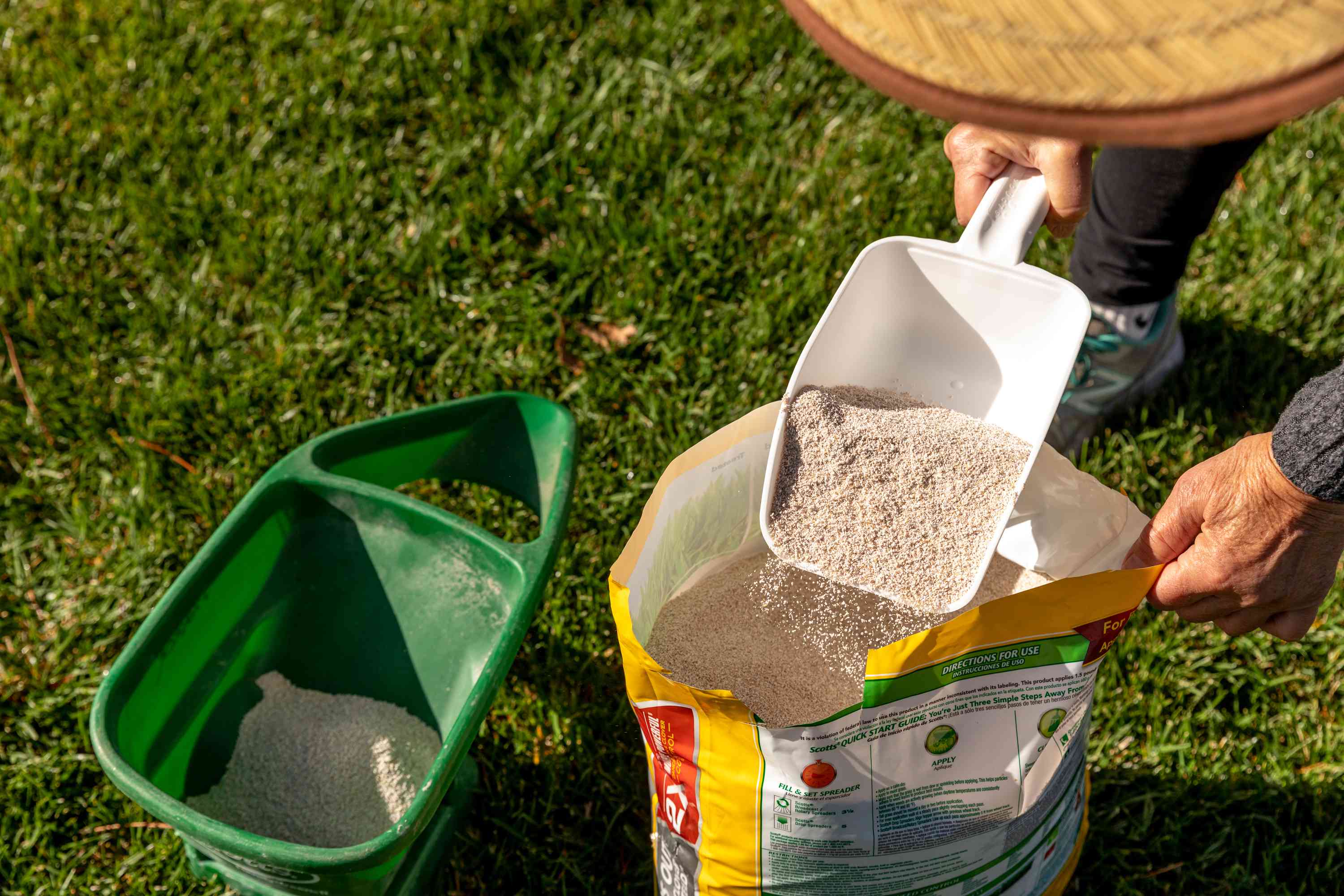Home>Gardening News and Trends>Latest News>Who Can Apply Pesticides In A Food Service Establishment?


Latest News
Who Can Apply Pesticides In A Food Service Establishment?
Published: November 25, 2023
Latest News: Find out who is authorized to apply pesticides in food service establishments and ensure safety and compliance.
(Many of the links in this article redirect to a specific reviewed product. Your purchase of these products through affiliate links helps to generate commission for Chicagolandgardening.com, at no extra cost. Learn more)
Table of Contents
- Introduction
- Definition of a Food Service Establishment
- Role of Pesticides in Food Service Establishments
- Regulations and Guidelines for Pesticide Application in Food Service Establishments
- Who Is Permitted to Apply Pesticides in Food Service Establishments?
- Training and Certification Requirements for Pesticide Applicators in Food Service Establishments
- Responsibilities of Pesticide Applicators in Food Service Establishments
- Monitoring and Inspections for Pesticide Use in Food Service Establishments
- Consequences of Improper Pesticide Application in Food Service Establishments
- Conclusion
Introduction
Welcome to the world of food service establishments, where the satisfaction and safety of customers is of utmost importance. In order to ensure the quality and integrity of the food served, there are a multitude of regulations and guidelines that must be adhered to. One crucial aspect of maintaining a safe and hygienic environment is the proper application of pesticides.
Pesticides play a vital role in food service establishments by effectively controlling and eliminating pests that can pose significant health risks and damage food products. From cockroaches and rodents to flies and ants, these pests can contaminate food, spread diseases, and negatively impact the reputation of the establishment. As a result, it is imperative to have a comprehensive understanding of who is authorized to apply pesticides in these settings to maintain a clean and pest-free environment.
In this article, we will delve into the regulations, guidelines, and training requirements for pesticide application in food service establishments. We will explore the responsibilities of pesticide applicators, the monitoring and inspection procedures implemented to ensure compliance, as well as the potential consequences of improper pesticide application. Armed with this knowledge, food service establishments can take the necessary steps to protect both their customers and their reputation.
Definition of a Food Service Establishment
Before we delve into the details of pesticide application in food service establishments, it is important to have a clear understanding of what constitutes a food service establishment. In simple terms, a food service establishment refers to any facility or location where food is prepared, stored, handled, or served to the public. This encompasses a wide range of establishments, including restaurants, cafes, fast food chains, bakeries, delis, catering services, and more.
Food service establishments are subject to stringent regulations and guidelines to ensure that the food served is safe, hygienic, and free from contaminants. These regulations are in place to safeguard public health and prevent outbreaks of foodborne illnesses. Maintaining a pest-free environment is an essential element of these regulations, as pests can not only contaminate food but also create unsanitary conditions that are detrimental to both employees and customers.
In addition to protecting the integrity of the food, food service establishments must also adhere to specific requirements regarding the handling, storage, and disposal of pesticides. These requirements exist to ensure that the pesticides are used safely and effectively, minimizing the risk of harm to individuals and the environment.
Now that we have a clear understanding of what defines a food service establishment, let’s explore the role of pesticides and the regulations surrounding their use in these settings.
Role of Pesticides in Food Service Establishments
Pests pose a significant threat to the safety and well-being of food service establishments. They can contaminate food, cause structural damage to the building, and transmit diseases. Pesticides play a crucial role in controlling and eliminating these pests, ensuring a safe and hygienic environment for both employees and customers.
One of the primary reasons for using pesticides in food service establishments is to prevent the spread of foodborne illnesses. Pests, such as rodents, flies, and cockroaches, can carry various pathogens that can contaminate food surfaces, utensils, and ingredients. Consuming food contaminated with these pathogens can lead to serious health issues, ranging from gastrointestinal illnesses to more severe conditions.
Pesticides also help preserve the integrity of the building structure. Termites, for example, can cause significant damage to the structure of a food service establishment, compromising its safety and stability. By effectively controlling pests, pesticides help prevent structural damage and the associated costs of repairs and renovations.
Furthermore, pests can create an unsanitary environment that is detrimental to employees and customers. Common pests like mice and cockroaches leave droppings, shed skin, and urine, spreading allergens and contaminants throughout the establishment. These biohazards can trigger allergic reactions and respiratory problems, posing a risk to the health and well-being of individuals within the premises. By implementing proper pest control measures, including the use of pesticides, food service establishments can maintain a clean and safe environment for everyone.
It is important to note that while pesticides are effective in controlling pests, their use should be balanced with other integrated pest management (IPM) strategies. IPM involves a holistic approach to pest control that focuses on prevention, monitoring, and least-toxic treatments. This approach aims to minimize the reliance on pesticides and prioritize non-chemical methods, such as sanitation, exclusion, and physical barriers. By incorporating IPM practices into their pest management protocols, food service establishments can ensure the long-term effectiveness and sustainability of pest control efforts.
Now that we understand the role of pesticides in food service establishments, let’s explore the regulations and guidelines governing their application in more detail.
Regulations and Guidelines for Pesticide Application in Food Service Establishments
The application of pesticides in food service establishments is strictly regulated to ensure the safe and responsible use of these chemicals. These regulations and guidelines are in place to protect the health of employees, customers, and the environment, while effectively controlling pests.
One of the primary governing bodies for pesticide regulations in the United States is the Environmental Protection Agency (EPA). The EPA sets out guidelines and requirements for pesticide registration, labeling, storage, handling, and application. These regulations ensure that the pesticides used in food service establishments are effective and pose minimal risks to human health and the environment.
Food service establishments must also comply with state and local regulations regarding pesticide application. Many states have their own specific laws and guidelines that further regulate the use of pesticides, taking into account local conditions and concerns.
In addition to the EPA and state regulations, various industry organizations, such as the National Pest Management Association (NPMA) and state pest control associations, provide guidance and best practices for pesticide application in food service establishments. These organizations offer resources and training programs to help businesses navigate the complexities of pest management and pesticide use.
When it comes to pesticide application, food service establishments must follow several key guidelines to ensure compliance:
- Pesticide Selection: Only EPA-approved pesticides should be used, and the selection should be based on the specific pest problem and the approved use on food service establishments.
- Pesticide Storage and Handling: Pesticides should be stored in designated areas that are secure, well-ventilated, and inaccessible to unauthorized personnel. They should also be stored away from food, food preparation areas, and water sources.
- Pesticide Application: Pesticides should be applied according to the instructions on the product label, which includes information on dilution ratios, application methods, and safety precautions. It is crucial to follow these instructions carefully to ensure effective pest control and minimize risks.
- Personal Protective Equipment (PPE): Pesticide applicators should wear appropriate PPE, such as gloves, coveralls, goggles, and masks, as recommended by the product label. PPE helps protect applicators from exposure to pesticides and ensures their safety during the application process.
- Notification and Record-keeping: Food service establishments may be required to notify employees and customers about pesticide applications. Additionally, they should maintain records of pesticide usage, including dates, product names, targeted pests, and application methods, as these records may be needed during inspections or in case of any incidents.
By adhering to these regulations and guidelines, food service establishments can effectively manage pests while maintaining the safety and well-being of all individuals involved.
Who Is Permitted to Apply Pesticides in Food Service Establishments?
When it comes to the application of pesticides in food service establishments, it is essential to have trained and qualified individuals who understand the proper use and handling of these chemicals. Not just anyone is permitted to apply pesticides in these settings; there are specific requirements and certifications that must be met.
In many jurisdictions, the primary requirement is that the pesticide applicator must hold a valid pesticide applicator’s license or certification. The exact requirements for licensure or certification may vary depending on the state or country, but generally, individuals must undergo training and pass an exam to demonstrate their knowledge and competence in pesticide application.
Food service establishments often rely on either in-house staff or professional pest control companies to handle their pest management needs. Both options have their advantages and considerations:
- In-House Staff: Some food service establishments may have their own team members designated to handle pesticide application. In this case, these individuals must have the necessary certification or licensing required by local regulations. The advantage of having in-house staff is that they have a direct understanding of the specific needs and challenges of the establishment. However, it is crucial that these individuals receive proper training and stay up-to-date with the latest regulations and best practices.
- Professional Pest Control Companies: Many food service establishments partner with professional pest control companies to handle their pest management needs. These companies employ licensed and trained pest control technicians who have the expertise to handle pesticide application effectively and safely. Hiring professionals can provide peace of mind, as these companies typically stay up-to-date with the latest regulatory requirements and industry best practices.
Regardless of whether pest management is handled in-house or by a professional company, it is essential that the individuals responsible for pesticide application understand and follow the regulations and guidelines set forth by the EPA, state/local authorities, and the specific food service establishment. This includes proper pesticide selection, storage, handling, and application methods.
It is important to note that food service establishments should always inquire about the certifications and licensing of individuals involved in pesticide application. This ensures that the individuals are qualified and knowledgeable in handling pesticides and minimizing risks to human health and the environment.
By having trained and qualified individuals entrusted with pesticide application, food service establishments can effectively manage pests while prioritizing the safety and well-being of their employees and customers.
Training and Certification Requirements for Pesticide Applicators in Food Service Establishments
When it comes to pesticide application in food service establishments, ensuring that the individuals responsible for handling these chemicals are well-trained and certified is crucial. Training and certification requirements vary by jurisdiction, but they are designed to ensure that pesticide applicators have the necessary knowledge and competence to carry out their responsibilities safely and effectively.
In the United States, the Environmental Protection Agency (EPA) sets the baseline requirements for pesticide applicators. The EPA requires that individuals who apply restricted-use pesticides, which are those deemed to have a higher potential for harm to humans and the environment, obtain a private or commercial applicator’s license. The requirements for these licenses may vary by state, but they generally involve completing a training course and passing an exam.
Food service establishments may also have additional training requirements specific to their operations. This can include training on food safety, pesticide storage and handling, IPM practices, and emergency procedures. These specialized trainings help ensure that pesticide applicators have a comprehensive understanding of the unique challenges and considerations within food service establishments.
Typically, the training courses cover essential topics such as:
- Pesticide Safety: Training on the safe handling, storage, and disposal of pesticides, as well as the use of personal protective equipment (PPE) to minimize exposure and risks.
- Pesticide Application Techniques: Instruction on proper pesticide application methods, including calibration of equipment, appropriate dosage and timing, and considerations for different settings and pests.
- Laws and Regulations: Education on the specific laws and regulations governing pesticide use, including federal, state, and local regulations, as well as labeling requirements and recordkeeping.
- Integrated Pest Management (IPM): Understanding the principles of IPM, which emphasize the use of multiple pest control strategies, including prevention, monitoring, and least-toxic treatments, in order to minimize reliance on pesticides.
- Environmental Protection: Awareness of the potential environmental impacts of pesticide use and the importance of using pesticides responsibly to protect natural resources.
Once the training is complete, individuals must pass an exam to obtain their pesticide applicator’s license or certification. These exams typically cover the materials covered in the training course and assess the applicator’s knowledge of pesticide regulations, safe handling practices, and pest control principles.
Food service establishments should ensure that pesticide applicators meet all training and certification requirements applicable to their jurisdiction. Regular refresher courses and ongoing education are encouraged to keep pesticide applicators up-to-date with the latest practices, regulations, and emerging technologies in pest management.
By investing in proper training and certification for pesticide applicators, food service establishments can be confident that their pest management efforts are being carried out by knowledgeable and competent individuals, reducing potential risks and ensuring the safety of employees and customers.
Responsibilities of Pesticide Applicators in Food Service Establishments
Pesticide applicators in food service establishments have a vital role in ensuring the safe and effective application of pesticides for pest control. These individuals are responsible for carrying out their duties in accordance with regulations, guidelines, and best practices to protect the health and well-being of employees, customers, and the environment.
Here are some key responsibilities of pesticide applicators in food service establishments:
- Pest Identification and Assessment: Applicators must be able to identify and assess the pest problems within the establishment. This includes determining the severity of the infestation, identifying the pest species, and understanding their behavior and potential risks.
- Pesticide Selection and Application: Applicators are responsible for selecting the appropriate pesticides for the specific pests and situation. This includes considering factors such as efficacy, safety, environmental impact, and compatibility with food service operations. Applicators must follow the product label instructions for correct dosage, application methods, and safety precautions.
- Proper Handling and Storage of Pesticides: Applicators must handle and store pesticides safely to prevent accidents and minimize risks. This includes wearing appropriate personal protective equipment (PPE), ensuring proper ventilation during application, and securely storing pesticides in designated areas away from food, food preparation areas, and water sources.
- Communication and Notification: Applicators may be required to communicate with employees and customers about pesticide applications. This includes providing advance notice of planned treatments, posting warning signs or notices in treated areas, and offering guidance on precautions to minimize potential exposure.
- Record-Keeping and Reporting: Applicators should keep accurate records of pesticide usage, including dates, locations, targeted pests, and the amount and type of pesticide used. These records may be required for regulatory compliance, inspections, and incident reporting.
- Monitoring and Evaluation: Applicators are responsible for monitoring the effectiveness of pest control measures and evaluating the need for ongoing or alternative treatments. This may involve conducting regular inspections, assessing pest activity, and making recommendations for improvements or adjustments to the pest management program.
- Continuing Education: Applicators should stay informed about the latest developments in pest control and pesticide safety. This includes participating in ongoing training programs, attending workshops or conferences, and staying updated with changes in regulations and best practices.
It is crucial for pesticide applicators to carry out their responsibilities diligently and ethically. They must prioritize the safety of employees, customers, and the environment by adhering to proper pesticide application techniques and integrated pest management principles.
By fulfilling their responsibilities, pesticide applicators contribute to maintaining a pest-free and hygienic environment in food service establishments, ensuring the safety and satisfaction of all individuals involved.
Monitoring and Inspections for Pesticide Use in Food Service Establishments
Monitoring and inspections play a critical role in ensuring the proper and safe use of pesticides in food service establishments. These measures help to verify compliance with regulations, identify potential issues or risks, and maintain a pest-free and hygienic environment for employees and customers.
Monitoring refers to the ongoing surveillance of pest activity and the effectiveness of pest control measures within the establishment. This involves regular inspections of the premises to identify signs of pest infestation, such as droppings, damage, or presence of pests themselves. Monitoring can also include the use of traps, baits, or monitoring devices to track pest activity and determine the need for further pest control interventions.
Inspections, on the other hand, are formal assessments conducted by regulatory authorities or third-party auditors to evaluate compliance with pesticide regulations and overall pest management practices. These inspections may be conducted randomly or scheduled, depending on the jurisdiction and specific requirements.
During inspections, the following aspects related to pesticide use and pest management may be assessed:
- Pesticide storage and labeling: Inspectors will examine the storage areas to ensure that pesticides are stored in appropriate conditions, such as proper containers, secure storage cabinets, and clearly labeled with necessary information.
- Documentation and record-keeping: Inspectors may review records of pesticide usage, application dates, locations, target pests, and the qualifications of pesticide applicators. These records should be accurate, up-to-date, and readily accessible.
- Pesticide application techniques: Inspectors will evaluate the methods used for pesticide application, including equipment calibration, application rates, and adherence to label instructions. They may also assess the use of personal protective equipment (PPE) by pesticide applicators.
- Integrated Pest Management (IPM) practices: Inspectors will assess whether food service establishments have implemented IPM strategies, such as proper sanitation practices, exclusion measures, and ongoing monitoring of pest activity, in addition to pesticide use.
- Communication and notification: Inspectors may verify that food service establishments have provided appropriate notifications to employees and customers about pesticide applications and have displayed warning signs or notices in treated areas.
- Employee training and certification: Inspectors may ask to see evidence of training and certification for individuals involved in pesticide application to ensure compliance with applicable laws and regulations.
In case of any identified violations or non-compliance, corrective actions or penalties may be imposed, depending on the severity and nature of the violations. This can range from warnings and retraining to fines, suspension of pesticide use, or even closure of the establishment in extreme cases.
Regular monitoring and inspections serve as important quality control measures for food service establishments. By proactively monitoring pest activity and maintaining compliance with pesticide regulations, establishments can effectively manage pests and minimize risks to the health and well-being of individuals.
Consequences of Improper Pesticide Application in Food Service Establishments
Improper pesticide application in food service establishments can have serious consequences, posing risks to human health, damaging the environment, and harming the reputation of the establishment. It is important to understand the potential repercussions of mishandling pesticides to ensure their safe and responsible use.
Here are some of the consequences that can arise from improper pesticide application:
- Health Risks: Pesticides are chemical substances designed to eliminate pests, but they can also pose health hazards if used improperly. Exposure to pesticides can lead to various health problems, including skin irritation, respiratory issues, eye and nose irritation, headaches, nausea, and in severe cases, more significant health effects. Individuals who consume food that has been contaminated with improperly applied pesticides may suffer from acute poisoning or long-term health effects.
- Environmental Damage: Pesticides can have adverse effects on the environment if they are not used according to regulations and best practices. Pesticides can contaminate soil, water sources, and air, posing risks to plants, animals, and ecosystems. This can disrupt the natural balance and have long-term impacts on biodiversity and ecosystem health.
- Legal Consequences: Improper pesticide application can result in legal ramifications for food service establishments. Violations of pesticide regulations can lead to fines, penalties, or even legal action, which can have significant financial and reputational implications for the establishment.
- Harm to Employee and Customer Trust: The improper use of pesticides can damage the trust and confidence of employees and customers. News of pesticide-related incidents or violations can quickly spread, leading to negative publicity and a loss of reputation for the establishment. Customers may be hesitant to dine or do business at a place that is associated with unsafe pesticide practices.
- Resistance and Inefficiency: Improper pesticide application, such as using incorrect dosage, not following label instructions, or not considering integrated pest management (IPM) principles, can contribute to the development of pesticide resistance in pests. Over time, pests can become less susceptible to the pesticides being used, rendering them less effective. This can result in increased pest problems, requiring stronger and potentially riskier pesticide treatments.
It is important that food service establishments prioritize the proper training and certification of pesticide applicators, follow all regulations and guidelines, and implement integrated pest management practices. By doing so, establishments can significantly reduce the risks associated with improper use of pesticides and maintain a safe and pest-free environment.
Ultimately, by taking responsible measures in pesticide application, food service establishments can protect the health and safety of their employees and customers, preserve the environment, and safeguard their reputation.
Conclusion
The application of pesticides in food service establishments is a critical aspect of maintaining a safe and hygienic environment for both employees and customers. Effective pest control is essential for preventing the contamination of food, the spread of diseases, and the deterioration of the establishment’s reputation.
In this article, we explored the definition of a food service establishment and the vital role that pesticides play in controlling pests within these settings. We learned about the regulations and guidelines governing pesticide application and the importance of proper training and certification for pesticide applicators.
We also examined the responsibilities of pesticide applicators, including pest identification, pesticide selection and application, proper handling and storage of pesticides, communication, record-keeping, and ongoing monitoring and evaluation of pest control measures. By fulfilling these responsibilities, pesticide applicators can ensure the safe and effective use of pesticides in food service establishments.
Furthermore, we discussed the consequences of improper pesticide application, including health risks, environmental damage, legal consequences, and harm to employee and customer trust. It is crucial for food service establishments to prioritize the proper training and certification of pesticide applicators, follow regulations and guidelines, and implement integrated pest management practices to mitigate these risks.
In conclusion, by adhering to proper pesticide application techniques, engaging in ongoing monitoring and inspections, and prioritizing the well-being of employees, customers, and the environment, food service establishments can effectively control pests, minimize risks, and maintain a safe and pest-free environment. By doing so, they can ensure the satisfaction and safety of their patrons and uphold their reputation as a trusted and responsible establishment within the food service industry.








